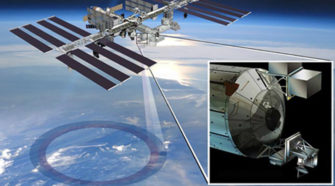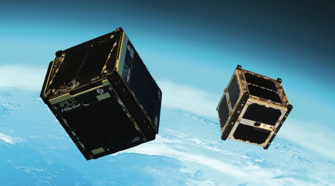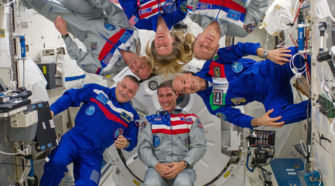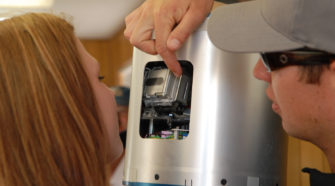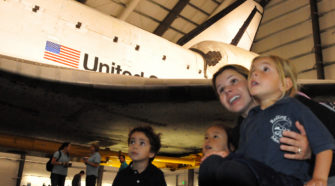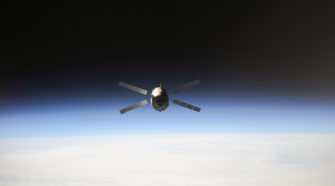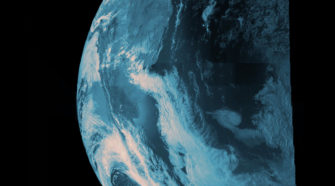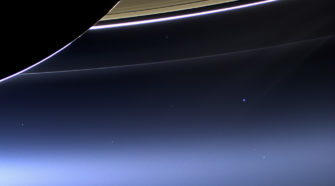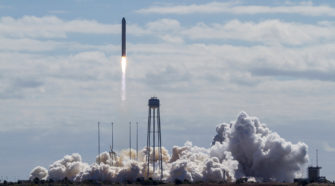Earth
The Auroras of Planet Earth
Nature has an uncanny knack of producing some of the most spectacular astronomical events we can witness, the likes of Solar eclipses, meteor showers and other phenomenon that never fail to impress. There is one event however, that once you witness it, it will be burnt into your memory and will stay with you for …
Watching Earth’s winds, on a shoestring
Built with spare parts and without a moment to spare, the International Space Station (ISS)-RapidScat isn’t your average NASA Earth science mission. Short for Rapid Scatterometer, ISS-RapidScat will monitor ocean winds from the vantage point of the space station. It will join a handful of other satellite scatterometer missions that make essential measurements used to …
CubeSats: Thinking inside the box, launching into space
Two tiny, cube-shaped research satellites hitched a ride to Earth orbit to validate new hardware and software technologies for future NASA Earth-observing instruments. The cube satellites, or “CubeSats,” which typically have a volume of exactly 1 liter, were launched on a United Launch Alliance Atlas V rocket on the night of Dec. 5, 2013 from …
Tweeting from the ISS
Astronaut Karen Nyberg (@AstroKarenN) posted this photo on Oct. 28 along with the following on twitter: W/ departure of #ATV4, aft docking port empty. We move our Soyuz there Fri making room for @AstroRM & @Astro_Wakata pic.twitter.com/lpatsjbAoA. Two days later she followed that with another tweet: Up early to suit up, get in Soyuz, undock …
Students send experiments to space on suborbital flight
Gasps, whistles, and cheers burst from 300 observers as the SpaceLoft 7 rocket blasted into the sky from Spaceport America in southern New Mexico. Among the crowd were 60 students, ranging from middle school through university level, who watched the rocket carry experiments they had designed and built. “That feeling of seeing something you built …
One year later: Endeavour still awing the people throughout Los Angeles
Controversy marked every step of Endeavour’s path to Los Angeles. From the beginning it was the old wrangling over which coast was the right coast – the ‘Left’ Coast or the East Coast? And did L.A. even deserve one of these precious birds? The answer to the questions posed all the way along became crystal …
Fiery end for ESA’s ATV Albert Einstein
ESA’s fourth Automated Transfer Vehicle cargo ferry, Albert Einstein, completed its five-month mission to the International Space Station by reentering the atmosphere today and burning up safely over an uninhabited area of the southern Pacific Ocean. Automated Transfer Vehicles (ATVs) are the most complex space vehicles ever developed in Europe and are the largest and …
Juno’s flyby portrait of Earth
This false color composite shows more than half of Earth’s disk over the coast of Argentina, South America and the South Atlantic Ocean as NASA’s Juno probe slingshotted by on Oct. 9, 2013 for a gravity assisted acceleration to Jupiter. The mosaic was assembled from raw images taken by the Junocam imager. Juno will arrive …
Cassini images Earth beneath Saturn’s rings
NASA’s Cassini spacecraft captured color images of Earth and the moon from its perch in the Saturn system nearly 900 million miles (1.5 billion kilometers) away on July 19. Meanwhile, MESSENGER, the first probe to orbit Mercury, took a black-and-white image from a distance of 61 million miles (98 million kilometers) as part of a …
Antares delivers Cygnus to ISS
The new ‘Commercial Space Era’ received a resounding boost today when a privately developed Antares rocket lofting the first ever Cygnus commercial cargo resupply craft thundered to space from America’s newest launch pad at NASA Wallops along the Eastern Shore of Virginia. The history making launch marks the first time that a spacecraft launched from …


